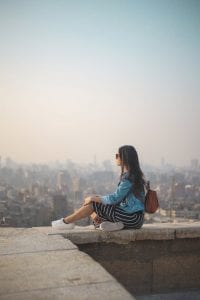For my Andy Warhol inspired project, I chose a pair of boots from Thursday Boot Company to represent me. I am an ambassador for Thursday Boot Company and as a Retail major, fashion is something I’ve always loved. I also care a lot about investing in high-quality goods from companies with transparent supply chains. Sustainability in the retail industry is something I’m very passionate about and would like to impact throughout my career, especially in a world driven by fast fashion. Fast fashion is a huge part of popular culture today; it is one driven by consumption where clothing and other apparel items are viewed as disposable. This is closely related to many of the ideas Warhol explored in his consumer-influenced work. I believe that fashion and art are equally reflective of the zeitgeist of a time period. Today, there is a pushback against overconsumption as many young people are beginning to care more about ethical sourcing and corporate social responsibility. The growing popularity of brands such as L.L. Bean, Patagonia, Girlfriend Collective, and Thursdays reflects this shift. I believe that other young people searching for more sustainable and responsible items that are still fashion-forward will connect to the item I have chosen to feature in my work.
Andy Warhol frequently used common items in his artwork to portray larger ideas about American consumption culture. He understood that while art is a part of modern culture, so is advertising, consumer goods, and celebrity. His art stood at the intersection of all of these topics. He took advantage of commercialism and built an identity around it. I believe that his ideas have merit; it is both clever and creative to simultaneously critique a system and take advantage of it. His unique subject matter and production automation paved the way for future art movements such as street art, which have been built around many of the same criticisms and ideas. Being able to create art in nontraditional formats such as Photoshop means that the definition of art is becoming more broad and that more people have access to art creation. I love applied art; I am not skilled at painting or other more traditional mediums. The ability to find creative outlets in areas such as digital art and fashion design has positively impacted my life.











































